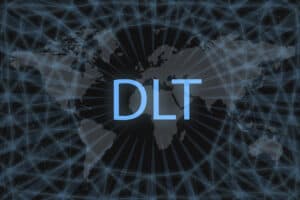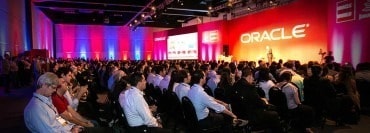
In a digital environment where trust is difficult to create and maintain through relationships, experience, or actions alone, DLT is essential for cross-collaboration and enterprise innovation.
Digital interfaces can often be complex – they accelerate transactions, processes, and relationships for greater collaboration across organizations. The unfortunate downside is that this increase in collaboration entails higher levels of vulnerability that can be exploited. Traditionally, trust has often been built on years of reciprocated action, shared experience, or long-standing relationships between technology providers, partners, and end-users. Decentralized structures can help create truly connected enterprises and ecosystems where traditional trust-building mechanisms are too slow or can no longer be relied upon. Enter distributed ledger technologies (DLT).
Instead of being built on existing relationships, trust can be anchored in and ensured through algorithmic processes (the so-called consensus mechanism), which control the transactions between different parties. It’s no longer a case of having to trust some man-in-the-middle (typically a single platform provider). It’s more about how all parties of a process collaborate to ensure everything is correct. DLT determine the conditions under which nodes of the decentralized infrastructure capture and record new transactions and when they do not.
See also: Making Blockchain, DLTs Less of a Resource Hog
What does DLT do?
Distributed ledger technology is an infrastructure that allows businesses to create, verify, and access digital transactions using a special form of replicated data validated across and shared with multiple sites, institutions, or geographies, accessible by multiple people. Without a need for central administrators or singular storage facilities, companies can trust and process transactions without involvement from third parties.
The best-known example of DLT is, without question, blockchain (with Bitcoin as a progenitor). While it is recognized and often most favorable, there are a plethora of DLT options for businesses to consider. In fact, many blockchain technologies are not viable in the context of the Internet of Things (IoT), where millions of connected devices and IoT endpoints exist. Especially public blockchains typically have relatively low transaction processing power (only a few transactions per second) and high transaction fees (of anywhere between $5 and $60 per transaction). They carry high cost and energy consumption rates due to the consensus mechanism chosen to ensure trust between all participants.
DLT has more going for it than blockchain technology alone. Alternatives are available across the DLT spectrum that already solve the so-called blockchain trilemma: guaranteeing high security, scalability, and decentralization. While a blockchain works with a linked list of blocks, IOTA, for example, uses the ‘Tangle,’ an acyclic fabric of mutually linked transactions that maintain the global shared state of the ledger while boosting speed. In addition, IOTA also avoids classic transaction fees, which would be prohibitive for applications in the IoT area, through an alternative consensus algorithm based on the reputation of the nodes. In all cases, enterprises need to carefully determine their non-functional requirements for their use case prior to selecting any particular DLT. Following are two examples of non-functional requirements:
- Builds Efficiency
IOTA and other open-source distributed ledgers have far more real-world applications like the service and maintenance of airplanes, for example. Flight logbook documentation is extensive, outlining where the plane went, fuel consumption, and any service work – and very often still on paper. If the aircraft changes hands after months or even years in operation, the new owners must work through a library of files and check every single entry to validate the condition of the aircraft, especially its airworthiness. This is currently a manual task. However, digitizing the documentation would simplify this process and complete it 5-10 times more quickly.
- Ensures Trust
DLT creates a single source of truth that cannot be tampered with, which reduces the risk of fraud and security in the digital age. It protects each transaction in a way that ensures any changes are always visible, so no one can doctor the information stored within it. This supports businesses in their day-to-day operations, knowing that all information is accurate and trustworthy.
With reference to the aircraft example, airlines know that they can trust leasing companies trying to sell them used aircraft. Owners know that service contractors have validated every step of maintenance when they need servicing. IoT can further support the documentation process through sensors that automatically collect key data, validate it, and store it in a distributed ledger.
Supporting the enterprise in the digital age
Organizations are now connecting in new, digital ways where extensive paper-based documentation is at odds with new, transformed ways of working. The pandemic spurred the enterprise’s digital transformation journey and has resulted in a dramatic change in the way that companies need to establish the trust to transact.
What makes DLT so exciting and relevant is that it was conceived and developed for this decentralized digital world where trust is at a premium. It’s not simply a case of storing the information safely that creates trust. It’s also how it’s created and continuously ensured between all the different partners of a business process. DLT determine the conditions under which nodes of the decentralized infrastructure capture and record new transactions and when they do not.
Collaboration and cooperation are increasingly important for successful businesses. DLT helps build and maintain trust as organizations continue their digital transformation journey and integration efforts by maintaining continued visibility into all aspects of a larger business ecosystem. In a digital environment where trust is difficult to create and maintain through relationships, experience, and/or action alone, DLT is essential for cross-collaboration and enterprise innovation.





























